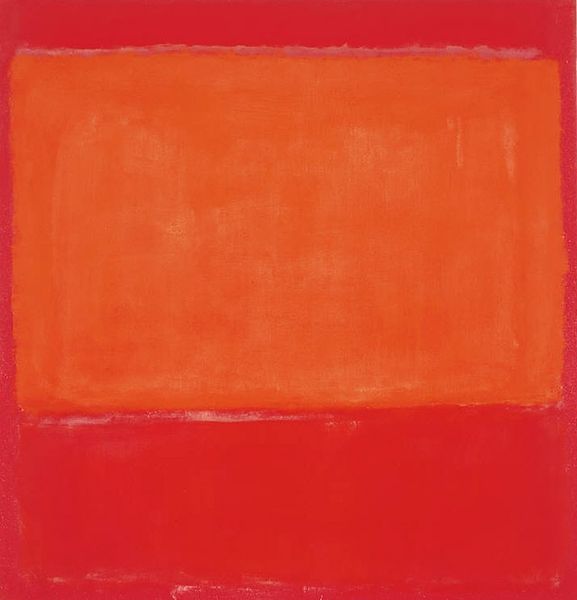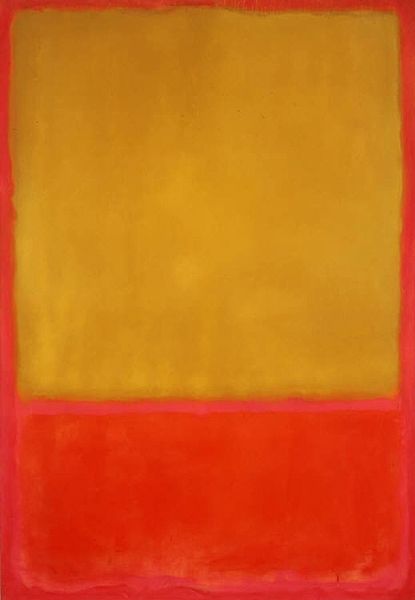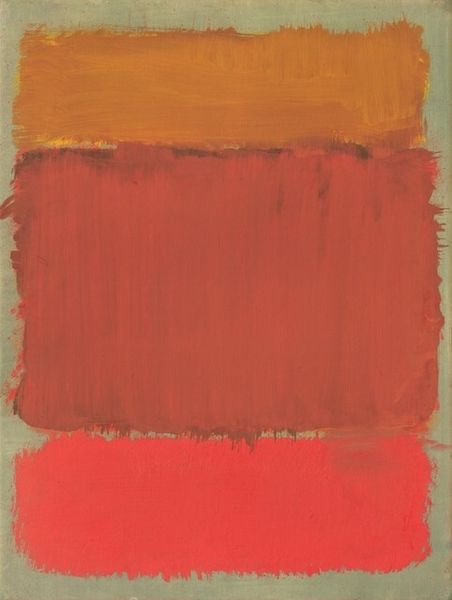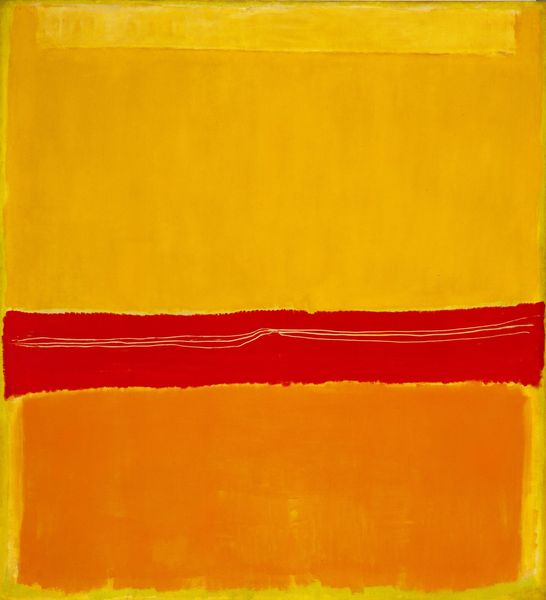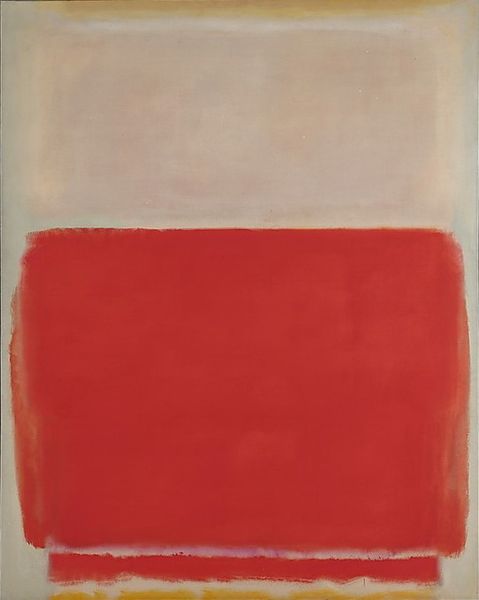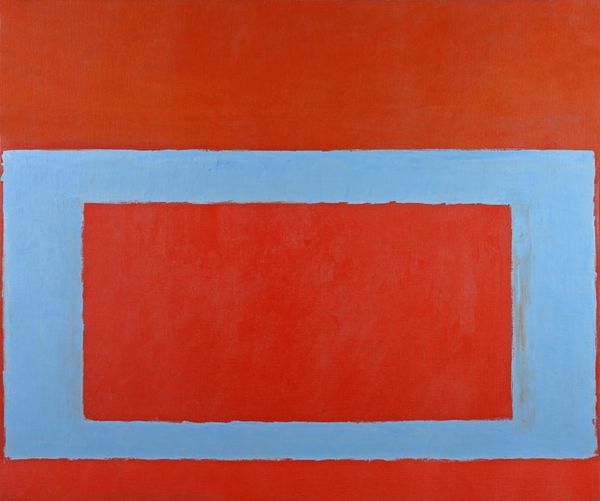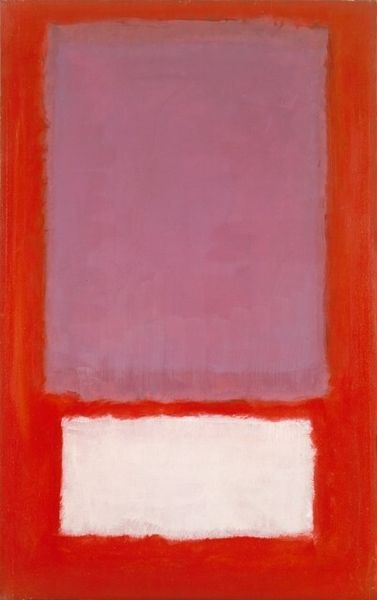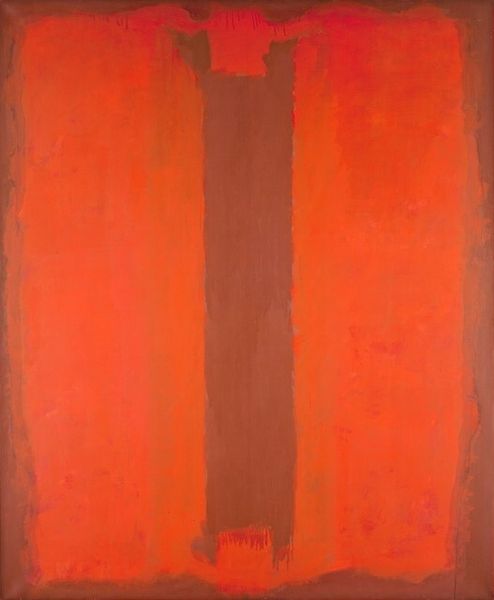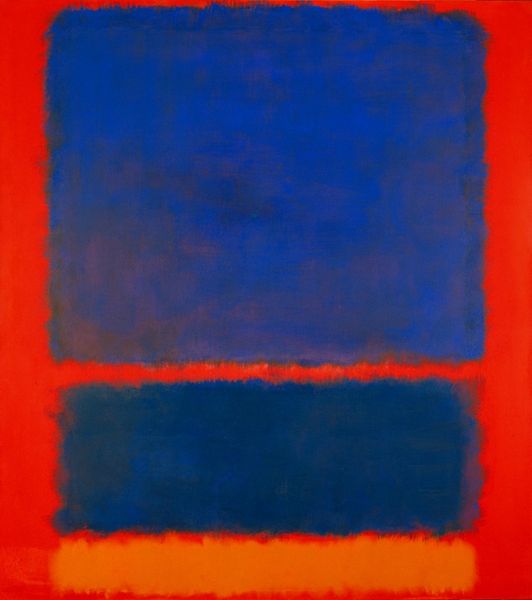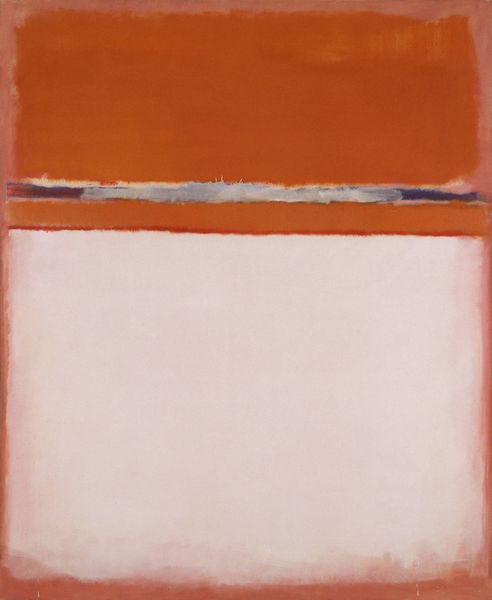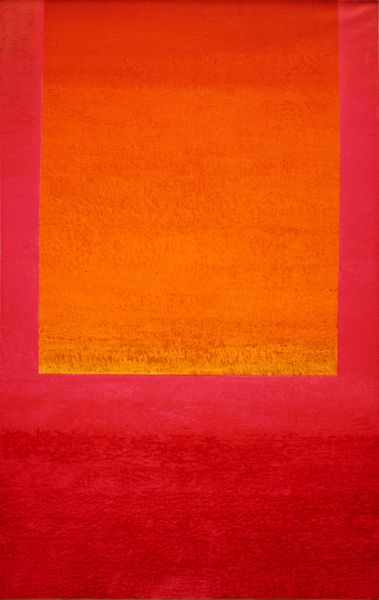
Copyright: Mark Rothko,Fair Use
Curator: Here we have Mark Rothko's "Red, White, and Brown" from 1957. It’s a rather monumental canvas using oil paint, showcasing his signature blocks of color. Editor: Immediately, it feels like I'm looking into an emotional abyss. The hues pulse; there's this vibrant energy wrestling with a somber gravity. It’s like a Rothko haiku, intense in its simplicity. Curator: Rothko, you know, was aiming for something profound. He believed these color fields could evoke deep spiritual experiences, a sort of transcendental meditation. The scale itself is crucial. To be confronted by these imposing colors... Editor: Yes, and I think Rothko's work reveals more than just his feelings; he’s tuned into something universal. The brownish rectangle hovers ominously above the softer orange. And the white feels almost like a foundation, a delicate base holding everything together, threatening to dissolve. Do you see it as geometric abstraction reflecting anxieties? Curator: Precisely. After the Second World War, a mood of disillusionment spread, particularly in America and Western Europe. People struggled with doubts, uncertain about what to believe and where to turn. They even grappled with defining what it meant to be human, facing challenges in areas like values, purpose, and identity. This quest for new meanings in existence deeply affected abstract artists like Rothko, influencing their work and the feelings they aimed to express. Editor: I also feel that his method adds weight to its presence. There is the feathery brushwork, the blurred boundaries between the color fields that evoke vulnerability, but then you have its confident size that pushes the observer into submission. It's like a performance. Curator: Indeed, he intended these paintings to be viewed up close. The gallery becomes a sacred space for an intimate encounter between the viewer and the artwork. So what began as paint on a canvas shifts into a philosophical reflection about the state of being human. Editor: Yes! What begins as an aesthetic act metamorphoses into something metaphysical and almost religious, but with a tint of anxiety. Well, I will need some time to sit with these buzzing hues. Thank you. Curator: Of course! I hope these reflections help you embrace the profound simplicity of it all.
Comments
No comments
Be the first to comment and join the conversation on the ultimate creative platform.
